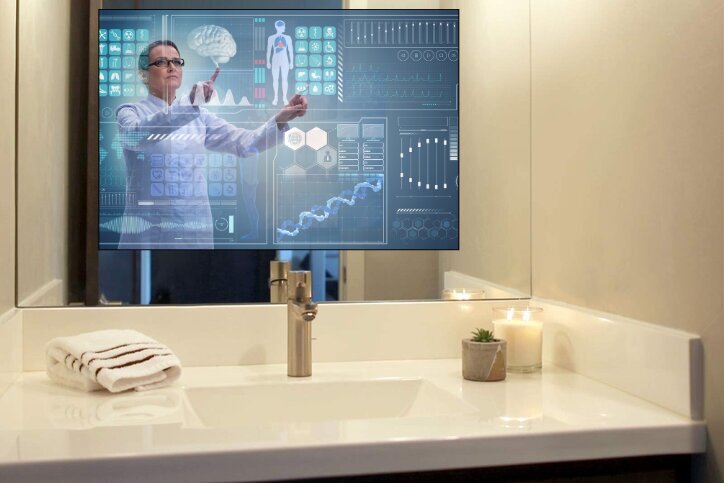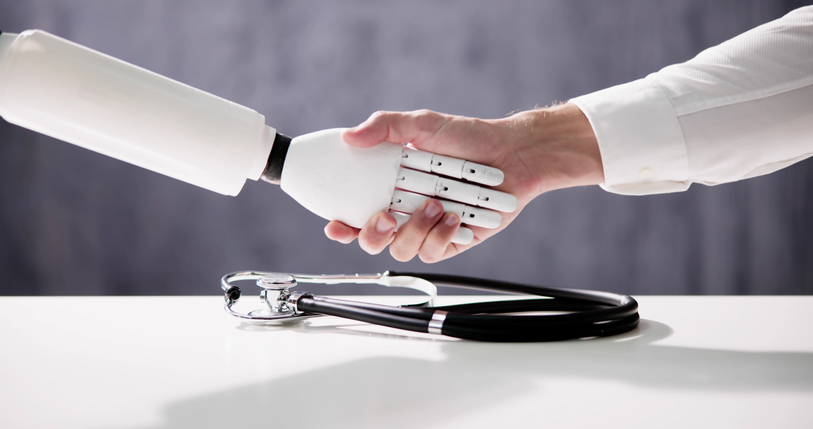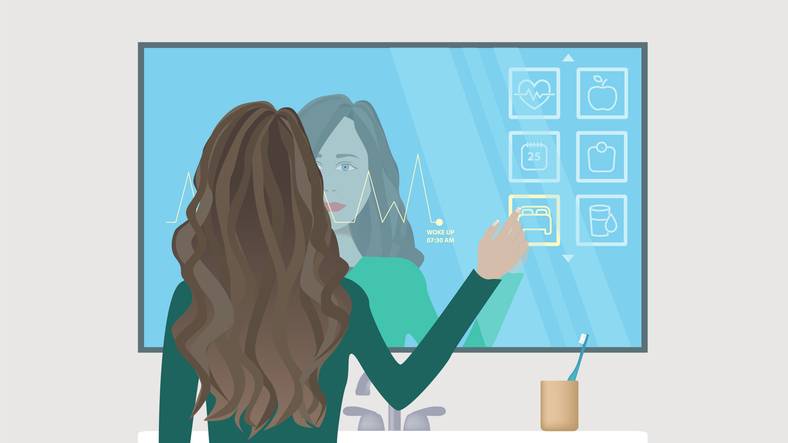By Ingrid Furtado – Published July 17, 2024

How innovative approaches in primary care are set to reshape the future of healthcare, ensuring better outcomes and more efficient systems.
You may open your fridge, drink some water, go to the toilet or take a shower without noticing how many biological indicators you passively leave behind. These everyday appliances and devices can be key to transforming the primary healthcare system. It is not all about technology, but this path is a strong force to promote change in how we use or consume medical services. The patient-centric model in hospitals, clinics, and pharmacies is still far from being mainstream in the healthcare industry worldwide, but it shows signs that a combination of technology, accessibility, and patient empowerment may be shaping the future of the primary care system.
The realm of health and wellness surpasses the borders of doctors, nurses, hospitals, pharmaceuticals, medicines, or devices and is deeply rooted within the social fabric of society. Technology, while a crucial component, is a single piece in the vast and multifaceted puzzle that is the healthcare ecosystem.
Given the diverse approaches to healthcare across nations, this article will focus its analysis on reimagining primary care from a broader perspective.
Considering the high preventability of major health conditions such as certain heart diseases, type 2 diabetes, lung complications, infectious diseases, and lifestyle-related issues like obesity, smoking, and poor diet, prevention should be a pivotal component of the primary care system, specialists said.
Emerging trends in healthcare, or any other industry, signal transformative changes that could reshape the field in the near future. While these subtle shifts may go unnoticed by many, futurists are tasked with identifying and analyzing these important indicators.
Shift: What is happening now, small or big, that can influence the future of health care?
Futurist and designer Denise Worrell has been working as a leader in innovation and VP of consumerism in major hospitals headquartered in Houston, Texas. She highlights that conventional brick-and-mortar hospitals represent critical and indispensable infrastructure for addressing emergencies, traumas, and disease outbreak responses.

Denise Worrell, futurist, and designer: Primary care evolves into a more flexible patient-doctor relationships
Consequently, transformations in their physical format and operational models are likely to occur at a much more gradual pace compared to other sectors within the healthcare ecology.
Unlike urgent or emergency services, primary care services such as family medicine, immunizations, disease screenings, and treatment for common illnesses or minor injuries are in the course of significant changes in the traditional format between patient and doctor, nurse and care, etc. One example is how less informal and flexible the patient-and-doctor relationships take place.
“People are trying to avoid the ‘middle man’ and have a different relationship with their health providers, more directly and interactively. In the weight loss industry, for instance, we are seeing patients accessing doctors through text message apps at any time, from anywhere, and this can be adopted by other health service areas,” Worrell says.
Segueing from other health sectors and markets, Denise Worrell, who currently serves as Principal at Langrand, a strategy and creative agency serving healthcare clients across the U.S., describes a potential image of the future regarding primary care.
“One possible situation is a patient having unlimited access to healthcare visits by subscribing to a flat fee model,” Worrell says.
While emergency services remain largely unchanged, hospitals are slowly adopting eco-friendly trends, such as green building technologies, sustainable waste management, and renewable energy are becoming more common. However, these changes are costly and require operational adjustments, presenting challenges for widespread adoption.
Just Technology?

Photo by Luis Villasmil on Unsplash
Mirror, mirror, on the wall, what wellness insights can you recall?
The mirror responds with personalized health tips and recommendations tailored to your unique needs, like detecting signs of stress or an overworked thyroid. Your iris can point to liver disease or reveal issues in the digestive system or even early signs of a compromised immune system.
Now, imagine the possibilities a smart water bottle can yield: indicating your hydration level and body temperature; and a toilet bowl that can analyze urine for biomarkers, ketones, and ovulation cycles.
While these scenarios may sound like a blend of fantasy and science fiction, the reality is that many of these technologies, or their precursors, already exist in various stages of development. What once seemed like futuristic imagination is rapidly becoming our present-day reality.
The gap between speculative fiction and practical application in healthcare technology is narrowing at an unprecedented pace, transforming the landscape of medical care before our eyes.
Virtually, it seems that technology is a key driving change for patients by offering convenience and potentially lower costs to integrate primary healthcare without the need to go to a physical facility.
However, Dr. Alan Howell, an infectious disease specialist, believes that the true catalyst for change in healthcare lies in human resources rather than technology alone.
Having actively served during the COVID-19 pandemic, he observes a distinct shift in the healthcare professional landscape. The crisis has created a clear demarcation in the experiences of health professionals—a ‘before and after COVID’ era.
Many in the field were profoundly impacted by burnout, both emotionally and physically. As a result, a significant number may not return to their previous roles in the workforce, potentially reshaping the composition of healthcare teams in the long term.

Dr. Alan Howell: Balancing empathy and efficiency in healthcare’s future
“The big disruption is not exactly technology but human resources. Soon we will have many health professionals retiring. We may not have enough people to perform all the primary care services—and then the technology comes,” says the physician who is also pursuing a master’s degree in Foresight Studies at the University of Houston.
The Clinician of the Future, a report by Elsevier and published in 2022, shows that 74% of the clinicians interviewed in the survey agreed there will be a shortage of nurses, and 68% agreed there will be a shortage of doctors by 2032.
The report includes responses from 2,830 health professionals across 118 countries, encompassing doctors, physician assistants, nurses, and midwives. Patient empowerment was also one important driver indicated by the respondents: 56% agreed patients have become more empowered to manage their own conditions over the last decade, and that trend may continue due to more information accessibility, which helps to raise the patient-informed ratio.
The mere contemplation of more automation in health treatments can be quite desolate for many, but if we pay close attention, we already wear devices, like a smartwatch, that read our heartbeat, record our sleep routine, measure how active a person is, and much more. If we extrapolate those devices 10 years forward, the report’s prospect can be quite plausible.
While the prospect of increased automation in healthcare may seem unsettling to many, integrating automation and artificial intelligence in medical treatments is inevitable, according to physician and futurist Alan Howell. He emphasizes that these technological advancements are not merely transient trends but permanent fixtures in the evolving panorama of healthcare.
“If we forgo the human element, we will lose the so important social interaction,” he said. But also the daily pressure and stress of a health professional would be out of the question. “If we think a bit further, a robot would not have a bad day”, Howell mentioned.
Soft Skills & Implications
Another driver observed is the congruence of preventive care and soft skills from doctors and nurses. “At least here in the US, doctors are under the gun to see X number of patients per day. This is a pressure we suffer and sadly the attention that a patient deserves is underestimated. But this mentality is changing as more attention to a partnership between physician and patient is being demanded,” physician Alan Howell pointed out.
While the integration of technology in healthcare offers convenient solutions and improved services, we must critically examine its broader implications, at least the ones we can imagine. The collection and ownership of personal health data by private companies raise significant concerns. For instance, the risk of data security being breached could expose sensitive information to unauthorized parties or even turn personal information into a commodification of health information.

The future of care: Is a plausible path striking a balance between human touch and robotic precision in doctor-patient relations?
How comfortable are people with their personal health information being widely accessible? Could people be subjected to genetic discrimination as health insurers use genetic information to discriminate against individuals predisposed to chronic diseases? Is there a potential for employers to access sensitive health information, such as the frequency of pregnancy tests, raising ethical and legal questions about employee privacy?
“People have different tolerances in trading data for convenience. But imagine in places where there are care deserts in rural areas? Usually, hospitals and clinics are built in urban regions where people have more money and health insurance. If you don’t have access to healthcare, you may be willing to prioritize your health over personal information,” highlighted Futurist and designer Denise Worrell.
Social Disparities
While technological advancements offer promising solutions, reimagining primary care in the face of social inequalities presents a far more complex challenge. The intersection of healthcare innovation and societal disparities requires a multifaceted approach that addresses both technological possibilities and deeply rooted social issues.
For both experts Denise Worrell and Alan Howell, the future of primary health care is preventive care, not reactive care. However, health is so complex that facilities like hospitals and clinics or even high-tech devices are not enough because health is a rhizomatic issue: to tackle it, many social inequalities need to be prioritized.
“We have social factors that directly influence health, we call them Social Determinants of Health (SDOH),” Alan Howell explained. No matter how technological the system becomes, if the person does not have access to basics like clean water to drink, healthcare access, and economic stability, it is hard to build preventive care.
“The story for underserved communities is very different. To better those social determinants of health is also an important type of preventive care”, said Denise Worrell.
“Many people live in a food desert, far from fresh nutrition; far from pharmacies or hospitals. What they access is highly processed food every day. How to prevent chronic diseases if that is what they can afford?”, physician Alan Howell questioned.
For him, there is also another driver that may improve the future of primary care: going back to the roots of food as the main prevention of diseases.
“I went to a conference about Nutrition Medicine, and they mentioned that many people don’t know how to cook simple meals. So, it involves educating people first. I think to arrive at a preferable future, we should revisit the past and create a resilient present,” said Alan Howell.
And you? What is your image of the Future of health care? Please, don’t hesitate to write in the comments below!
About PreEmpt
PreEmpt.life helps people, teams, and organizations to Reimagine Tomorrow and Alexis is the AI driving PreEmpt’s foresight services. See below for a hint of some insights about the future of healthcare and also the full link to the PreEmpt report.
- PreEmpt combines collective human and artificial intelligence to develop agile and robust strategies that empower you to cut through uncertainty.
- If you want to know more about PreEmpt or have questions on what topics or reports you need, please, click here or reach out to PreEmpt’s team here.
- Foresight PreEmpt reports at $190.
Alexis Generated Ideas about reimagining hospitals:
Emerging major implications that could influence hospital services:
- AI Integration in Healthcare Delivery: Artificial Intelligence could transform diagnostics, provide personalized care, and optimize hospital operations. However, the fear of job losses and privacy issues need careful handling.
- Transition to Eco-friendly Hospitals: Transition to green infrastructure, renewable energy, and sustainable waste management could significantly reduce hospitals’ carbon footprint. Adapting such fully-fledged eco-positive initiatives could face initial resistance due to substantial costs, yet the long-term gains could be immense.
- High-tech Implementation: Expansive use of AI in patient care and implementation of high-tech equipment could take central stage, leading to both efficiency and ethical considerations around patient data, machine bias, and the doctor-patient relationship.
- Regional Necessity-Driven Customization: Fostering an environment that values cultural nuances, local needs, and provides care accordingly could influence healthcare delivery systems largely. Yet, balance in maintaining standards across regions could pose challenges.
- Continuous Staff Training: Investing in training and learning development for hospital staff to enhance skills and provide job security in the wake of AI automation is crucial for the growth of the hospital services industry.
You also can access for free PreEmpt’s information on the Future of Hospitals in the link below:
https://www.preempt.life/report/public_view.html?synthesisId=u59xl4pha5: Healing the Future: Transforming Tomorrow’s Healthcare Landscape
Healing the Future: Transforming Tomorrow’s Healthcare Landscape
About the Author

Ingrid Furtado is a dynamic storyteller committed to use her news expertise to bridge the gap between journalism and accessible foresight literacy. As a futurist, she assists organizations and communities navigate change and uncertainties, shaping a path toward sustainable and preferable futures. Ingrid firmly believes that kindness infuses rhythm into every action in life. Her core values include fostering empathy, creativity, intellect, and leadership.
